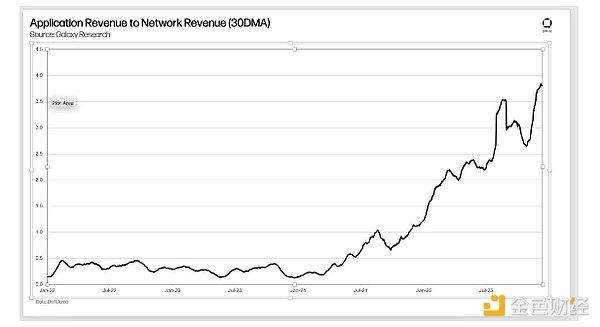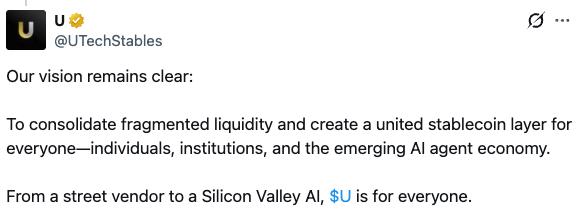Author: YettaS
The biggest feeling I had from this trip to Consensus HK was that VC is too difficult, it's not an exaggeration to say that the situation is dire, in stark contrast to the P Generals. Some VCs are unable to raise funds for the next round, some VCs have lost half their staff, some VCs have turned to strategic investment instead of independent investment, and some VCs are even considering issuing Meme to raise funds...
Many VC peers have also chosen to leave the field, with some joining project parties and others transforming into KoLs, which seem to be more cost-effective choices. In the midst of the changes, everyone is looking for new ways to survive. And I'm also thinking, what's the problem with VCs? And how can we break the deadlock?
First of all, we have to admit that, whether in China or the US, the best days for VCs as an investment asset class are over. The chart below shows the return data of several Lightspeed funds, with the best fund achieving a 3.7X DPI return in 2012 by investing in Snap, Affirm, and OYO (DPI is the distributed profit index, which measures the actual cash return and is not dependent on valuation), of course, it's nothing compared to directly buying BTC, and since 2014, even breaking even has become a challenge.

Chinese VCs have also experienced a similar trajectory. Relying on the demographic dividend, the rapid growth of mobile internet and consumer internet has spawned companies like Alibaba, Meituan, and ByteDance worth hundreds of billions. 2015 was the last glorious moment, after which tightening regulations, tightening liquidity, declining industry dividends, facing growth bottlenecks due to changes in the industrial cycle, and limited IPO exit channels have led to a sharp decline in the returns of VC firms, with a large number of practitioners leaving the industry.
Crypto VCs are no exception either, as changes in the macro environment, evolution of market structure, and declining capital returns have all posed huge survival challenges for VCs.
It's all about cost and liquidity
In the past, the value chain of VC investment was clear: project parties brought innovative ideas, VCs provided strategic support and resources, KoLs amplified market voice at critical moments, and finally value discovery was completed on the CEX. Everyone provided different value and took on different risks at different stages, and received corresponding returns, which was a "relatively fair" value chain.
For example, as a VC, the value we provide has never been as simple as just investing some money in the early stage. How to help the project party connect with the key resources in the ecosystem as soon as possible to drive business development, provide timely advice when the market direction changes, help the project party adjust its strategy, and even help build the core team. And in order to bind with the project party in the long term, not to mention when the TGE will be, even after the TGE, we usually face one year of lockup and 2-3 years of vesting, to a large extent we all hope to play a non-zero-sum game PVE with the project party.
However, in the current market environment, the core contradiction is that - liquidity is extremely scarce, market competition is intensifying, and the VC model is unsustainable.
The changing landscape of capital flow: where does the dilemma of VCs come from?
The main driving force of this bull market is the US Bitcoin spot ETF and the strong entry of institutional investors. However, the transmission path of capital has undergone a major change:
Institutional capital mainly flows into BTC, BTC ETF or Index, but does not spread to the broader Altcoin market;
Lacking real technical/product innovation support, Altcoins are difficult to maintain high valuations.
This directly leads to the VC model being highly FUD in the current market environment. Retail investors believe that VCs enjoy unfair advantages, can acquire tokens at lower costs, and hold key market information, and this information asymmetry has led to the collapse of market trust and further depletion of liquidity. In a PvP environment, retail investors demand "absolute fairness". In comparison, the strategy of secondary funds will not be in strong opposition to market sentiment, because retail investors can also enter the market with the same tokens, after all, they have been given the opportunity of absolute fairness.
The current overwhelming FUD against VCs is a counterattack of "absolute fairness" against "relative fairness" in the context of liquidity scarcity.
The rise of Meme financing model
If I saw Meme as a cultural phenomenon last time, this time we need to see it as a new financing model. The core value of this financing model is -
Fair participation mechanism: Retail investors can track information through on-chain data and obtain early tokens under a relatively fair pricing mechanism;
Lower entry barrier: During the DeFi Summer, we supported many solo devs who drove value capture through product innovation. Now, the Meme model further lowers the threshold, allowing developers to "have assets first, then have products".
There is nothing wrong with this logic itself. Looking back, many public chains conducted TGEs without a mature ecosystem or mainnet, so why can't Meme use the same approach, first attracting enough attention and then pushing product development?
Essentially, this evolutionary path of "assets first, products later" is the sweeping of the populist capitalist wave over the entire financial ecosystem. The prevalence of attention economy, catering to the public's desire for quick wealth, breaking the monopoly of traditional financial institutions, lowering the capital threshold, and transparent information disclosure, these are the unstoppable trends of the new populist era. The GameStop retail investor battle against Wall Street, the evolution of fundraising methods from ICO to NFT to Meme, all are the financial version of the zeitgeist.
So I say, Crypto is just a microcosm of this era.

The role of VCs in the new model
No financing model is perfect. The biggest problem with the Meme financing model is the extremely low signal-to-noise ratio, which brings unprecedented trust challenges -
Extremely low signal-to-noise ratio: Fair launch makes the cost of asset issuance extremely low, leading to a lot of junk.
Lack of information transparency: For high-liquidity Meme projects, everyone in the market can enter early, which means that whether the project will be built in the long run is no longer so important, what matters is how to profit in the game.
Trust cost soaring: High liquidity means high gaming. The first day of circulation means we have no mechanism to bind interests with the Founder to achieve long-term win-win, we can all become opponents at any time, becoming each other's exit liquidity, this trust structure is dangerous and unsustainable.
I fully agree with @yuyue_chris on the difference in mindset between different participants:
Those who play Meme think: narrative > token structure ~ community or emotion > product technology;
The primary market thinks: narrative > product technology ~ token structure > community or emotion;
The Meme model is essentially a darker on-chain world than the VC model. Due to the lack of product and technical support, "absolute fairness" is often just a facade. Look at Libra, the cabal behind the market carefully plans each public positive news, and in the end we become the precisely targeted victims. They can always predict your prediction, and in the highly gamified environment, the true long-term Builders become hard to discern.
I don't think VCs will disappear, because this world is full of huge information asymmetry and trust asymmetry, for example, the cooperative resources that ARC has access to are something an ordinary Dev cannot obtain.
But faced with such a populist capitalist wave, VCs still naively hope to simply exploit information asymmetry and make money lying down as they have in the past, which is completely unrealistic. Adapting to change has never been easy, especially when the market paradigm is being completely restructured and the methodologies that have been effective in the past are being rapidly eliminated. The rise of Meme financing is not accidental, but the result of deeper-level liquidity changes and trust mechanism reshaping.
When the high liquidity and short-term speculation mindset of Meme meets the long-term support and value empowerment of VCs, how to find a balance point between the two is the problem that VCs must currently face. On the one hand, Primitive is fortunate to have this freedom and flexibility to respond to market changes, but recognizing structural changes and transforming its investment strategy is no easy task.
But regardless of how the market changes, one thing remains unchanged - what ultimately determines long-term value are those exceptional founders with foresight, super execution capabilities, and a willingness to continuously build.







